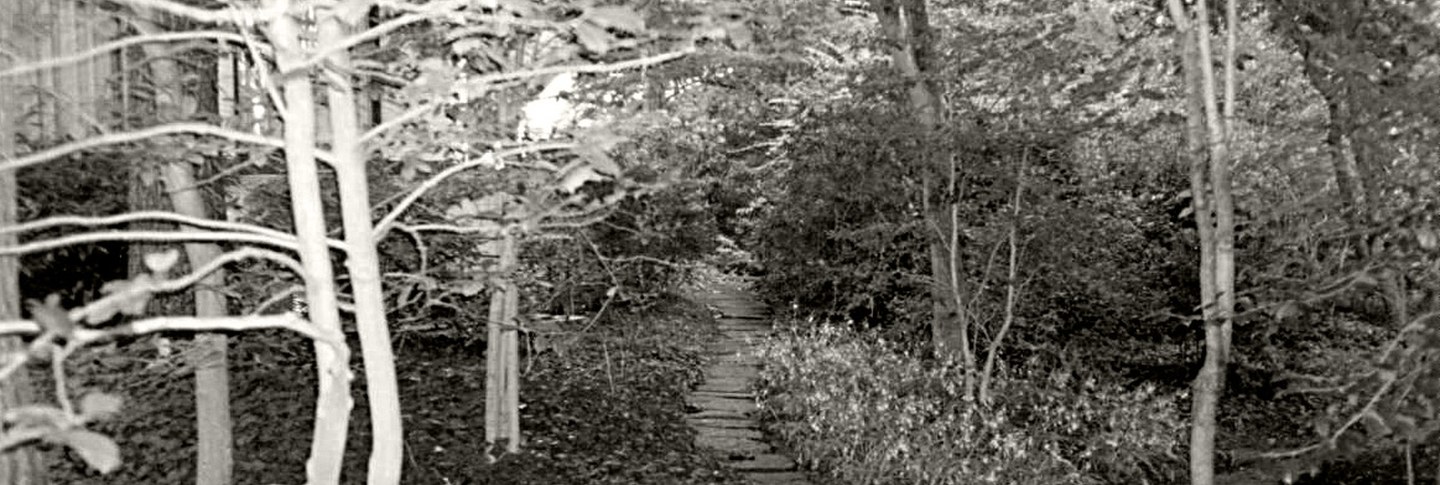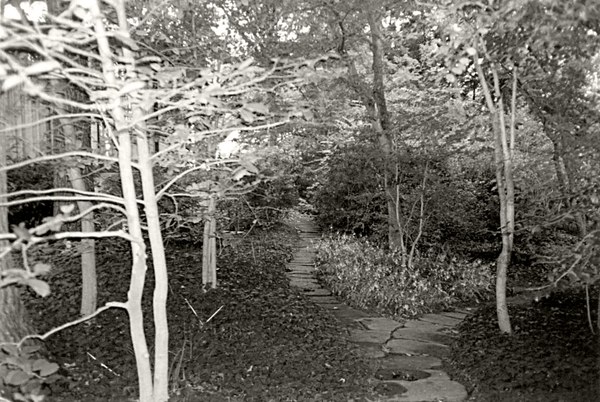The Copse, sometimes known as the Bosquet, is a garden feature at Dumbarton Oaks that has become less prominent since the construction of the Pre-Columbian Pavilion in 1963. Planting in the Copse probably began around the time of the Music Room construction in 1927. The Copse design borrowed heavily from similar idealized woodlands planted at Versailles, which served as informal intermediate areas between highly designed landscapes and wilderness. The Blisses purchased an 18th-century neoclassical Provençal fountain from Paul Gouvert in 1927, and this water feature became a highlight of the area. Farrand planned a number of bluestone pathways to cut lazily through the woodland to the bowling green in the north. Along the paths she planted early spring flowers, Dogwood, and Japanese maples. Heavy evergreens she placed in bulk along the 32nd Street wall, to maintain privacy.
By the early 1960s, change came to the Copse. In 1961, the Provençal fountain was removed, and eventually made its way to the center of the Ellipse. Between 1962 and 1963, Phillip Johnson’s Pre-Columbian wing of the museum was constructed. Johnson’s design sensitively incorporated the surrounding landscape through an innovative use of glass, however the Copse was still significantly reduced by the addition of the building. What plantings remained maintained the informal nature of the original, expansive Copse. A path still cuts from the Music Room Terrace in the south to the Bowling Green in the north. Secluded seating areas, accessible only to the staff, dot the landscape. In 2004, the 1930s Lady and Unicorn statue by Daniel Gillette Olney was moved to the Copse.

